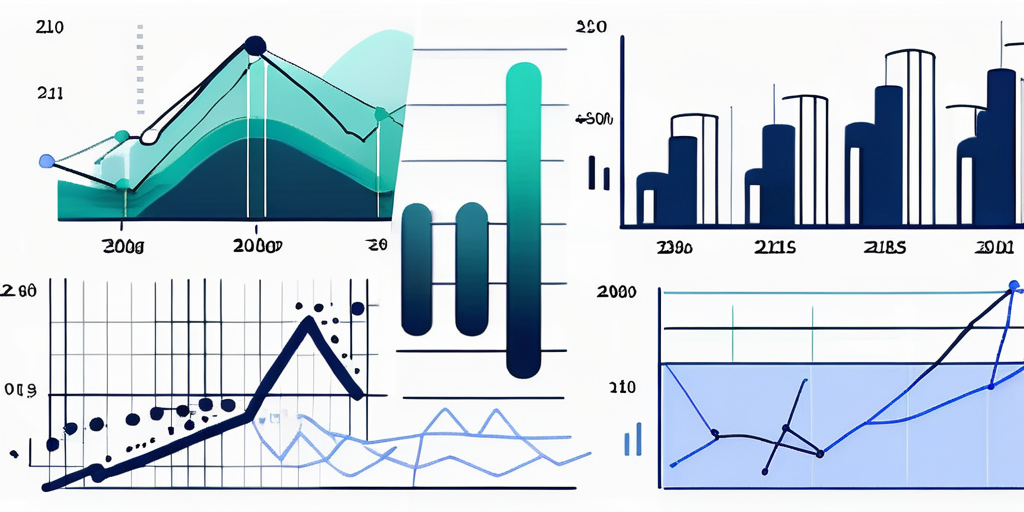Regression, in the context of artificial intelligence and machine learning, is a statistical method used to predict a continuous outcome variable (dependent variable) based on one or more predictor variables (independent variables). It is a powerful tool that is widely used in predictive modeling and data mining.
The term ‘regression’ was coined by Sir Francis Galton in the 19th century, during his studies of heredity in sweet peas. He used the term to describe the biological phenomenon that the heights of descendants of tall ancestors tend to regress down towards a normal average (a phenomenon also known as regression toward the mean).
Types of Regression
There are several types of regression techniques available to make predictions. These techniques are mostly driven by three metrics: the number of independent variables, the type of dependent variables, and the shape of the regression line.
It’s important to choose the right type of regression for your data, as using the wrong method can lead to inaccurate predictions. The type of regression to use depends on what type of data you have and what you’re trying to achieve with your analysis.
Linear Regression
Linear regression is the most basic and commonly used predictive analysis. The overall idea of regression is to examine two things: does a set of predictor variables do a good job in predicting an outcome (dependent) variable? And, which variables in particular are significant predictors of the outcome variable, and in what way do they–indicated by the magnitude and sign of the beta estimates–impact the outcome variable?
These regression estimates are used to explain the relationship between one dependent variable and one or more independent variables. The simplest form of the regression equation with one dependent and one independent variable is defined by the formula y = c + b*x, where y = estimated dependent variable score, c = constant, b = regression coefficient, and x = score on the independent variable.
Logistic Regression
Logistic regression is used when the dependent variable is binary in nature. In other words, the output or the dependent variable is always in the form of 0 or 1, Yes or No, True or False, etc. but not limited to these and can be more.
For example, if you want to predict whether a particular political leader will win the election or not. In this case, the outcome of prediction is binary i.e., 0 or 1 (Win/Lose). The predictor variables here would be the amount of money spent for the campaign, the amount of time spent in campaigning, etc.
Assumptions of Regression

Regression analysis makes several key assumptions:
- Linear relationship: Regression assumes that the relationship between the dependent and independent variables is linear. However, this might not always be the case. Sometimes, a curvilinear relationship might better describe the data.
- Independence: Observations are assumed to be independent of each other.
- Homoscedasticity: This assumption states that the variance of errors is constant across all levels of the independent variables.
- Normality: This assumption states that the errors of the prediction will be normally distributed.
If these assumptions are violated, then the results of the regression analysis could be biased, inefficient or inconsistent.
Applications of Regression
Regression analysis is widely used for prediction and forecasting in various fields, including:
- Business: For predicting key business metrics like sales and revenues.
- Finance: For predicting stock prices or the risk of certain investments.
- Healthcare: For predicting patient outcomes based on various health metrics.
- Sports: For predicting player performance or team success based on various factors.
It’s also used to understand which among the independent variables are related to the dependent variable, and to explore the forms of these relationships. In restricted circumstances, regression analysis can be used to infer causal relationships between the independent and dependent variables.
Limitations of Regression
While regression is a powerful tool, it does have its limitations. For one, regression does not work well with non-linear data. If the data shows a curvilinear relationship, then a linear regression will not produce accurate results.
Another limitation is that regression analysis relies on the independence of the predictor variables. If the predictor variables are correlated with each other (a problem known as multicollinearity), then the estimates of the regression coefficients can be unreliable.
Overfitting and Underfitting
Overfitting occurs when a statistical model or machine learning algorithm captures the noise of the data. Intuitively, overfitting occurs when the model or the algorithm fits the data too well. Specifically, overfitting occurs if the model or algorithm shows low bias but high variance. Overfitting is often a result of an excessively complicated model, and it can be prevented by fitting multiple models and using validation or cross-validation to compare their predictive accuracies.
Underfitting occurs when a statistical model or machine learning algorithm cannot capture the underlying trend of the data. Intuitively, underfitting occurs when the model or the algorithm does not fit the data well enough. Specifically, underfitting occurs if the model or algorithm shows high bias but low variance. Underfitting is often a result of an excessively simple model.
Conclusion
Regression analysis is a powerful statistical tool that allows researchers to examine the relationship between two or more variables of interest. While there are many types of regression analysis, at their core they all examine the influence of one or more independent variables on a dependent variable.
Despite its many benefits, regression analysis also has its limitations. It requires a linear relationship between the dependent and independent variables. It also assumes that the errors are normally distributed and that the variables are not perfectly multicollinear. However, when used properly, regression analysis can be a powerful tool in the hands of any researcher.



